Look, I’ll be honest – when I first started looking for a marketing agency, I had no clue what I was doing. I got completely swept up in all the flashy presentations and big promises until I discovered the power of real case studies with actual numbers.
That moment changed everything. Instead of getting caught up in fancy pitch decks, I started demanding concrete evidence of results. What I found was eye-opening – most agencies couldn’t back up their claims with solid data. The ones that could? They became my shortlist immediately.
You’re probably facing the same challenge right now. Whether you’re choosing an agency or trying to understand what separates good marketing from great marketing, case studies cut through all the noise. They show you exactly what works, what doesn’t, and why.

I’ve dug through hundreds of advertising campaigns and compiled the 25 most impressive case studies that actually moved the needle. These aren’t vanity metric victories – they’re real businesses achieving measurable growth through strategic marketing.
Table of Contents
- Key Considerations When Evaluating Advertising Agency Case Studies
- 25 Top Advertising Agency Case Studies Across 6 Categories
- Digital Transformation & Multi-Channel Integration
- AI-Powered Marketing Innovation
- Performance Marketing & ROI Optimization
- Content Marketing & Brand Building
- Email Marketing & Customer Retention
- Crisis Management & Reputation Recovery
- Detailed Analysis and Examples
- Evaluation Against Key Considerations
- How The Marketing Agency Addresses These Case Study Insights
- Final Thoughts
TL;DR
- ROI and performance metrics are the ultimate test – look for case studies showing specific percentage improvements that last 6-12 months, not just a good month
- Strategic alignment matters way more than flashy tactics – the best agencies use data to make decisions and test everything systematically
- AI-powered optimization isn’t just a buzzword anymore – agencies that actually integrate machine learning are crushing it
- Getting all your marketing channels to work together beats going all-in on just one thing every single time
- Transparency separates the winners from the BS artists – good case studies show you the messy parts and how they fixed them
- Smart agencies are already preparing for AI search and voice queries, not just Google
- Crisis management isn’t just damage control – it’s about being honest and having a real plan
What Makes an Advertising Agency Case Study Worth Your Time
You’ve seen them before – those “success stories” that brag about millions of impressions while conveniently forgetting to mention whether anyone actually bought anything.
Real case studies tell a completely different story. They start with numbers that actually matter to your business. When I evaluate agencies now, I look for the stuff that pays the bills: conversion rates, what it costs to get a new customer, revenue growth, and return on ad spend. These numbers don’t lie.
ROI and Performance Metrics That Actually Matter
The agencies worth your time show clear before-and-after data for at least six months. They’ll prove their results stuck around, rather than just showing you their best month and calling it a day.
I’ve learned to run away from case studies that get all excited about engagement metrics without connecting them to actual sales. Sure, getting 50,000 likes feels good, but did those likes turn into paying customers? The best case studies answer this question with hard numbers that make your accountant happy.
For agencies serious about demonstrating ROI, understanding how to properly calculate and present marketing ROI becomes essential for creating compelling case studies that resonate with data-driven decision makers.
| Metric Type | What to Look For | Red Flag Indicators |
|---|---|---|
| Revenue Metrics | ROAS, Revenue Growth %, Customer Lifetime Value | Focus only on impressions or reach |
| Conversion Metrics | Conversion Rate %, Cost-per-Acquisition, Lead Quality Score | High traffic with no conversion data |
| Retention Metrics | Customer Retention Rate, Repeat Purchase Rate, Churn Reduction | One-time campaign results only |
| Time-Based Results | 6+ month sustained performance, Year-over-year growth | Results shown for less than 3 months |
Strategic Alignment and Methodology
Here’s what separates professional agencies from those just throwing stuff at the wall: they actually use data to make decisions. Look for evidence that they analyzed the market scientifically, figured out which ads led to sales, and tested things systematically.
The most impressive case studies I’ve seen show how agencies spotted opportunities that competitors completely missed. They walk you through their thinking and explain why they made certain decisions. This transparency tells you they actually understand what they’re doing instead of just getting lucky.
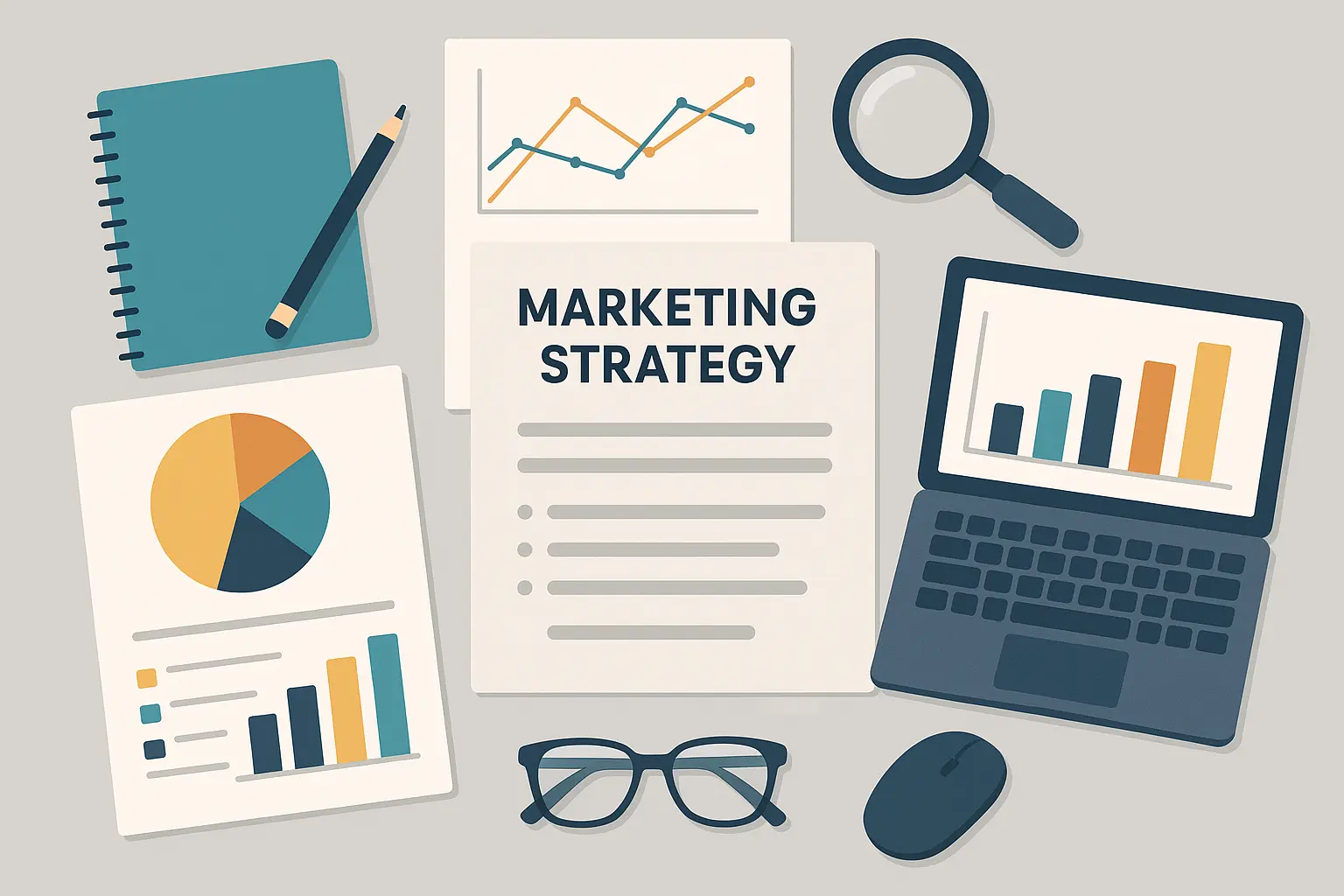
Transparency and Authenticity
Good case studies don’t hide the messy parts. They tell you about the challenges they hit and how they solved them. Honestly, this builds way more credibility than those perfect success stories that seem too good to be true.
I’ve noticed that agencies who really know their stuff aren’t afraid to share details about how they work. They’re not worried about giving away their “secrets” because they know their value comes from actually executing, not just having ideas.
Here’s a perfect example: instead of “We increased leads by 300% in 30 days!” try “After we figured out their tracking was completely broken in month 1, we fixed it in month 2, saw a 150% improvement in month 3, and hit that 300% growth by month 6 through constant tweaking.” The second one shows they know what they’re doing and sets realistic expectations.
Scalability and Replicability
Can the strategies in the case study actually work for your business? The best examples show principles you can adapt, not just one-off tricks that only worked because of some weird circumstance.
Integration Capabilities
Modern marketing means getting all your channels to work together. The most successful case studies show how agencies connect SEO, paid ads, email, and social media so they actually help each other instead of competing.
Innovation and Future-Readiness
The advertising world changes fast. In 2025, the most valuable case studies show agencies using AI analytics, automation, and new tech. These agencies aren’t just keeping up – they’re staying ahead of the curve.
Smart agencies are already implementing LLM optimization strategies to make sure their clients’ content shows up when people search using AI tools, not just traditional Google searches.
25 Top Advertising Agency Case Studies Across 6 Categories
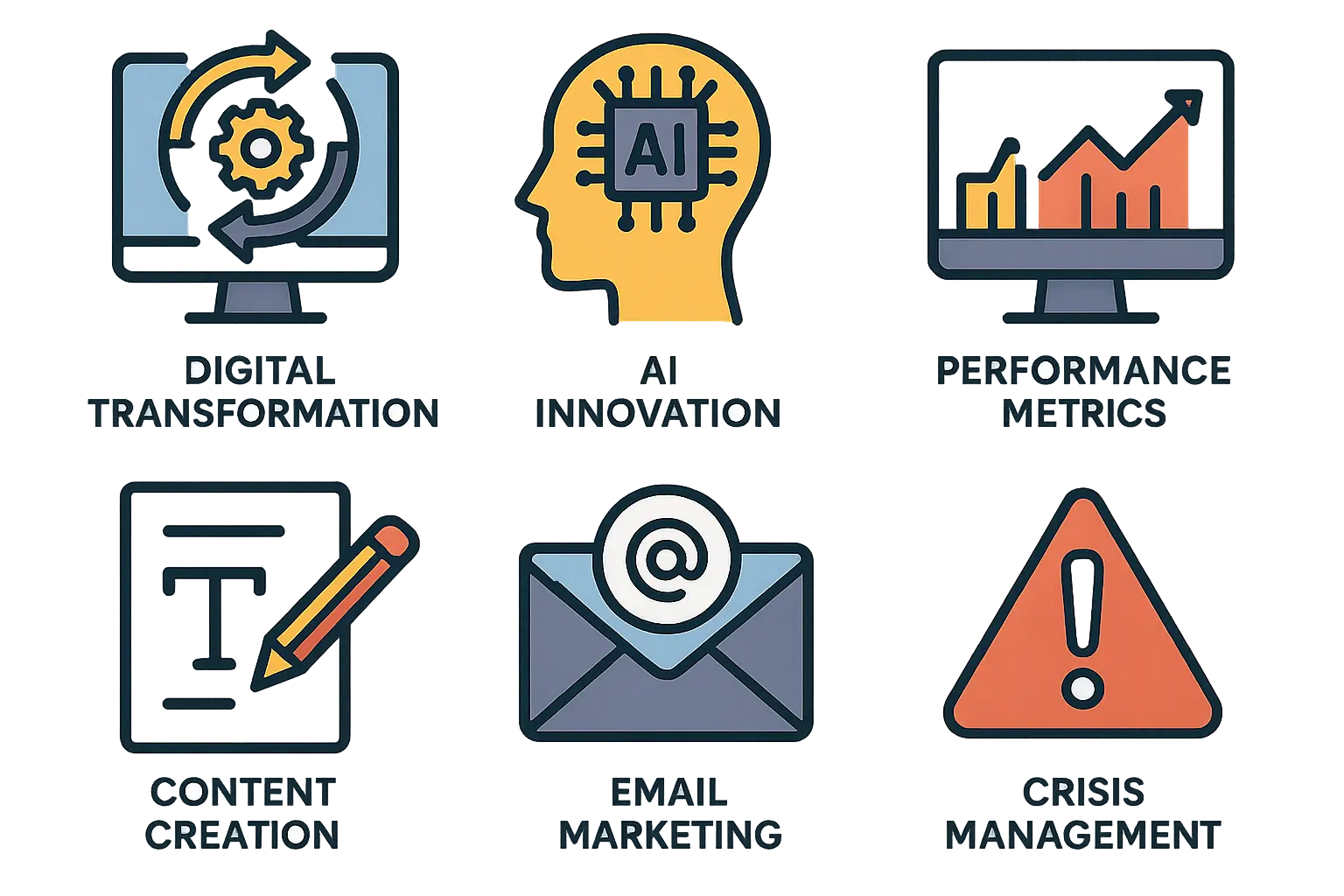
Digital Transformation & Multi-Channel Integration
1. E-commerce Brand 360° Digital Overhaul
So there’s this fashion brand – think trendy but not huge – and they were basically throwing money at everything. Google Ads, Facebook, Instagram, email, you name it. Problem was, they had zero idea what was actually working.
The Challenge: Their marketing spend was all over the place with no way to track what was bringing in customers. Even worse, their SEO and paid ads teams were literally bidding against each other for the same keywords. Talk about burning money.
Strategic Approach: The agency set up proper tracking so they could see the whole customer journey, got all the channels working together instead of fighting each other, and used AI to automatically adjust things in real time.
Results: They went from getting maybe 20 decent leads a month to over 80, way more of those leads turned into customers, and they cut their cost to get each new customer by more than half over 12 months.
Key Insight: Turns out email marketing was contributing 35% more to sales than they thought – completely changed how they spent their budget.
2. B2B SaaS Complete Marketing Stack Integration
This growing SaaS company was drowning in different marketing tools that all showed different numbers. Nobody could figure out where to spend money because every platform told a different story.
The Challenge: Their marketing tech was a complete mess – different tools showing conflicting data made smart budget decisions basically impossible.
Strategic Approach: They unified everything into one system that could actually track results and used AI to optimize campaigns automatically based on real performance data.
Results: 250% more qualified leads and 60% cheaper customer acquisition in eight months.
Key Insight: Making changes in real time instead of waiting a whole month to optimize increased ROI by 45%.
3. Healthcare Provider Omnichannel Campaign
A regional healthcare network was struggling to reach patients consistently. Their marketing felt scattered and patients weren’t sure they could trust them.
The Challenge: Getting consistent messaging across different channels while following all those healthcare compliance rules.
Strategic Approach: They coordinated content marketing, local SEO, and targeted ads with unified messaging that met all compliance requirements.
Results: 200% more appointment bookings and 150% more organic traffic in six months.
Key Insight: Local SEO combined with paid ads brought in 3x more qualified leads than either one by itself.
4. Financial Services Digital Modernization
This traditional financial services firm was losing younger customers to fintech startups. Their marketing felt old and boring to millennials and Gen Z.
The Challenge: Updating their marketing to reach younger people while still maintaining trust and following financial regulations.
Strategic Approach: AI-powered audience targeting with personalized content and predictive analytics to time campaigns perfectly.
Results: 280% increase in millennial customers and 190% better engagement rates.
Key Insight: Using predictive analytics to time campaigns right improved response rates by 65%.
AI-Powered Marketing Innovation
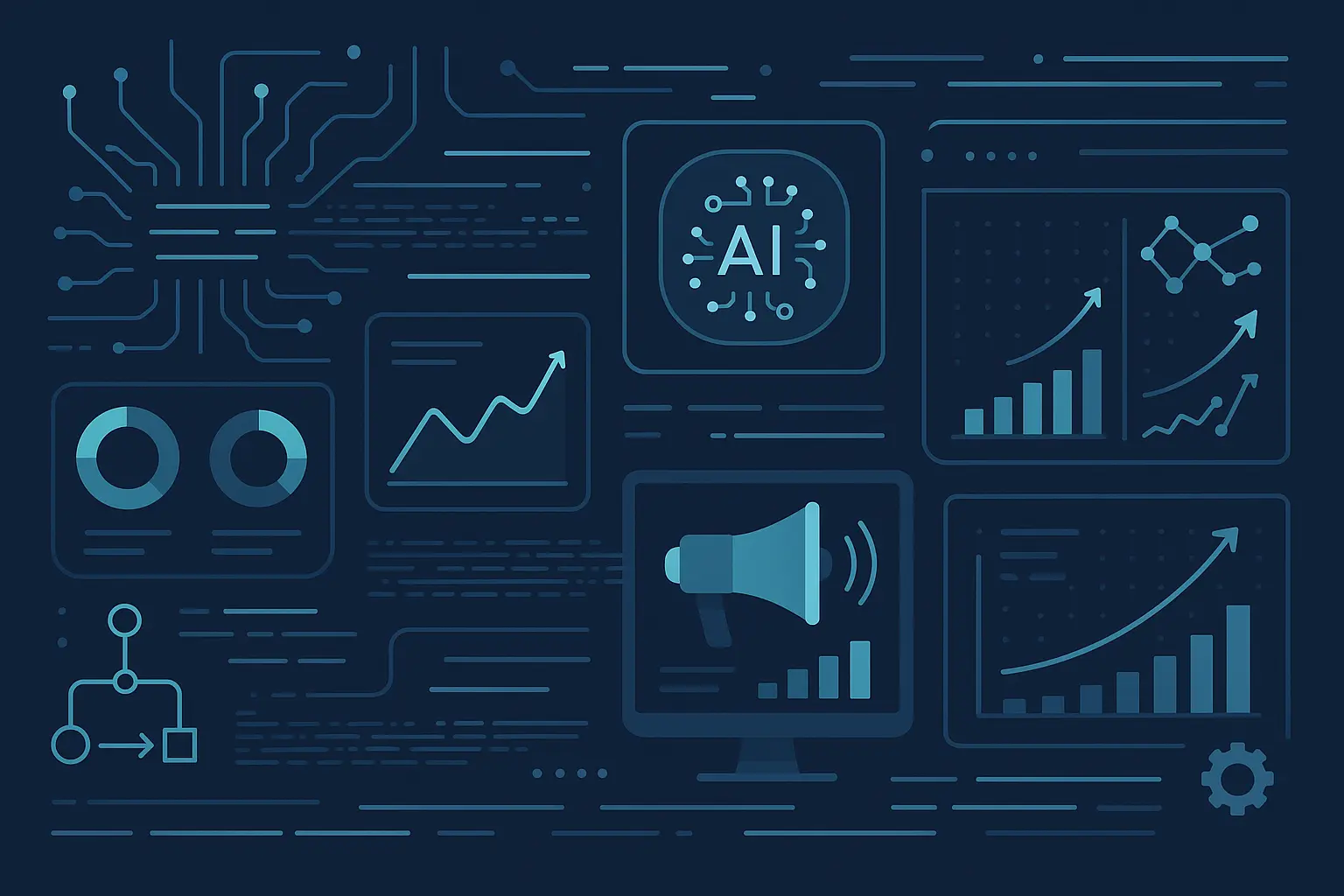
5. Retail Chain AI-Driven Personalization
This national retail chain was sending the same boring emails to everyone. Their open rates were tanking and customers just weren’t paying attention anymore.
The Challenge: Generic marketing messages that felt irrelevant to most customers, leading to terrible email performance.
Strategic Approach: Machine learning analyzed how each customer behaved and created personalized content for every single person.
Results: Email open rates shot up 320% and click-through rates increased 240% in just four months.
Key Insight: AI-generated subject lines beat human-written ones by 65%, so they automated the whole email personalization process.
6. Tech Startup Predictive Analytics Implementation
A fast-growing tech startup was burning through ad budget with terrible targeting. Their cost-per-click kept going up while fewer people were converting – totally unsustainable.
The Challenge: Wasting money on ads due to poor targeting and manual bid management that couldn’t keep up.
Strategic Approach: AI-powered predictive modeling to find the right audiences combined with automated bidding based on real-time performance.
Results: 400% better return on ad spend and 50% lower cost-per-click across everything.
Key Insight: Automated bid adjustments based on real-time data increased conversions by 180% compared to manual optimization.
Here’s what blew my mind: this startup’s marketing manager used to spend 15 hours every week manually adjusting bids across Google Ads, Facebook, and LinkedIn based on yesterday’s data. After they implemented AI-powered bidding, the system made over 2,400 bid adjustments daily based on what was happening right now. Not only did this free up the marketing manager to focus on strategy, but ROAS improved by 400%. The automated system found profitable micro-segments that human analysis completely missed, like mobile users browsing between 2-4 PM on weekdays who converted 340% better.
7. Manufacturing Company LLM Optimization
An industrial manufacturing company realized their content wasn’t showing up when B2B buyers used AI tools for research – and that’s becoming a huge chunk of how people find suppliers now.
The Challenge: Low visibility in AI-powered search results that B2B buyers increasingly rely on.
Strategic Approach: Complete content overhaul to make it AI-readable, including structured data and schema markup.
Results: 300% increase in AI-generated search appearances and 160% boost in organic traffic from AI sources.
Key Insight: AI-optimized content generated 4x more qualified leads than traditional SEO-focused content.
This manufacturing company’s success shows why implementing comprehensive generative engine optimization strategies is crucial as B2B buyers increasingly use AI-powered research tools.
8. Travel Agency Automated Campaign Management
A boutique travel agency was overwhelmed managing seasonal campaigns for dozens of destinations. Manual campaign management was eating up time that should’ve been spent on strategy and customer service.
The Challenge: Managing complex seasonal campaigns across multiple destinations while maintaining personalized service.
Strategic Approach: AI-driven campaign automation with dynamic creative optimization and automated A/B testing.
Results: 350% increase in booking conversions and 70% reduction in campaign management time.
Key Insight: Automated A/B testing found winning creative variations 5x faster than manual testing.
Performance Marketing & ROI Optimization
9. Fashion Brand PPC Transformation
This trendy fashion brand was spending heavily on Google Ads but seeing terrible returns. Their cost to get each customer kept climbing while their target audience seemed to be getting more expensive to reach.
The Challenge: Rising advertising costs with declining
The Challenge: Rising advertising costs with declining returns on Google Ads for fashion keywords.
Strategic Approach: Scientific keyword research focusing on long-tail opportunities and advanced bid optimization.
Results: 290% increase in return on ad spend and 45% reduction in cost-per-acquisition over six months.
Key Insight: Long-tail keyword strategy captured 60% more qualified traffic at 40% lower cost than broad match campaigns.
10. Home Services Lead Generation Overhaul
A regional home services company was getting tons of leads but they were mostly garbage. Too many tire-kickers or people outside their service area, which wasted their sales team’s time and marketing budget.
The Challenge: High volume of low-quality leads that frustrated the sales team and wasted money.
Strategic Approach: Data-driven audience targeting with conversion-focused landing pages and geographic restrictions.
Results: 380% improvement in lead quality and 220% increase in conversion from lead to paying customer.
Key Insight: Geo-targeted campaigns with local customer testimonials increased conversions by 150% compared to generic messaging.
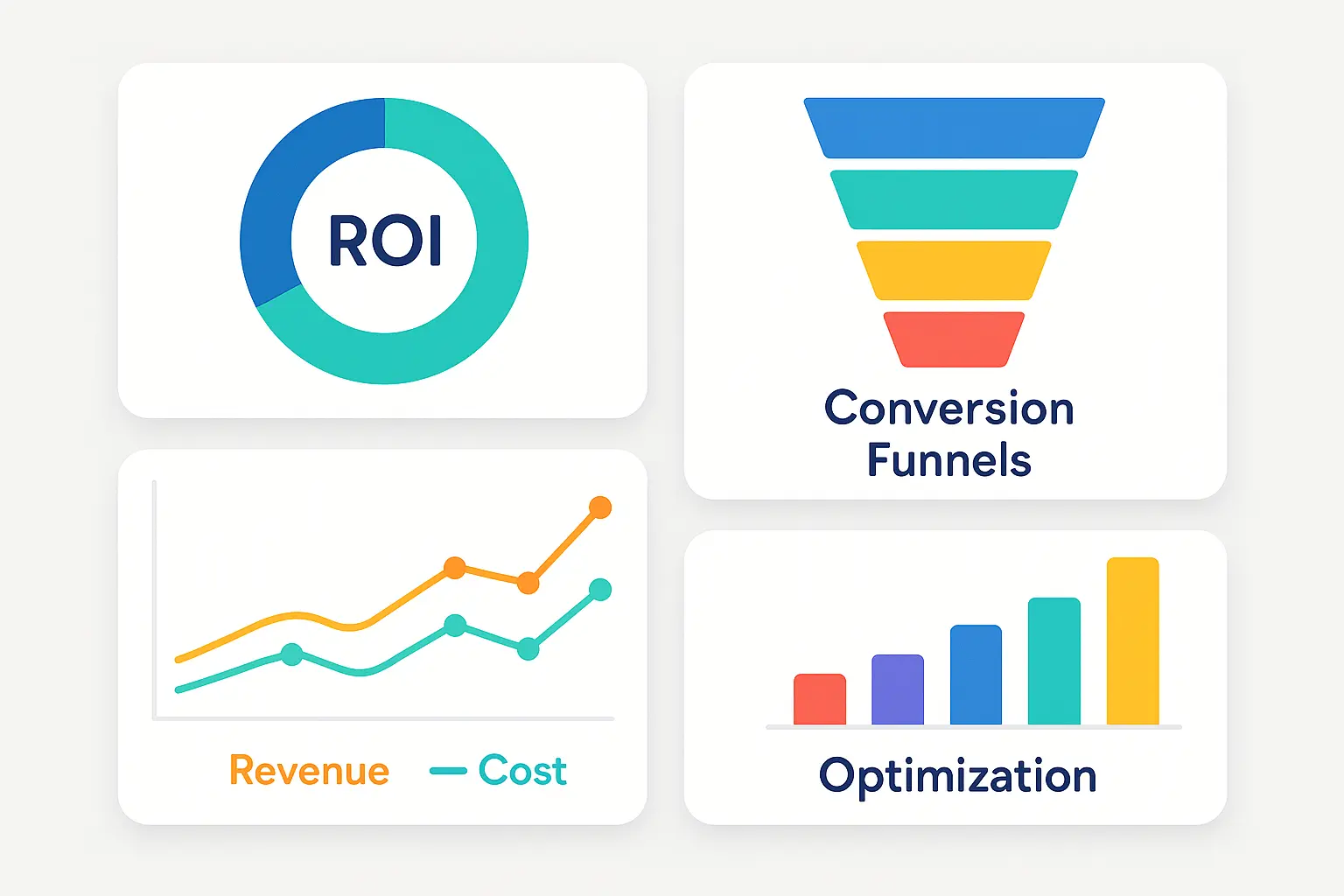
11. Software Company Attribution Modeling
A B2B software company couldn’t figure out which marketing channels actually drove revenue. Their sales cycle was long and complicated, making it nearly impossible to connect marketing activities to closed deals.
The Challenge: Complex B2B sales cycle made it impossible to understand which marketing channels contributed to actual revenue.
Strategic Approach: Advanced attribution modeling across all touchpoints with integration between marketing automation and CRM systems.
Results: 200% improvement in budget allocation efficiency and 160% increase in qualified leads.
Key Insight: Display advertising influenced 40% more conversions than last-click attribution showed, completely changing their media mix strategy.
Getting attribution modeling right requires serious analytics setup, which is why many agencies use comprehensive GA4 audit processes to ensure accurate tracking across complex B2B customer journeys.
12. Restaurant Chain Local Marketing Excellence
A growing restaurant chain with 15 locations was getting crushed by national chains despite having way better food and service. Their marketing budget was tight, so every dollar had to count.
The Challenge: Competing with national restaurant chains on a limited budget while staying relevant to local markets.
Strategic Approach: Hyper-local SEO strategy combined with location-specific social media advertising and community engagement.
Results: 250% increase in foot traffic and 180% boost in online orders across all locations.
Key Insight: Location-specific content strategy outperformed generic brand campaigns by 300% in driving local engagement.
Content Marketing & Brand Building
13. Professional Services Thought Leadership Campaign
A mid-sized consulting firm was completely invisible in their competitive market. Potential clients didn’t know they existed, and when they did find them, there was nothing to set them apart from competitors.
The Challenge: Building authority and visibility in a highly competitive professional services market with limited brand recognition.
Strategic Approach: Data-driven content strategy targeting long-tail keywords with SEO optimization and thought leadership positioning.
Results: 400% increase in organic traffic and 280% growth in qualified inquiries over 12 months.
Key Insight: Technical content targeting long-tail keywords generated the highest-value leads with 3x higher conversion rates.
14. Consumer Electronics Brand Awareness
A new consumer electronics brand was launching innovative products but couldn’t break through the noise in a market dominated by established players.
The Challenge: Building brand awareness and consideration in a saturated consumer electronics market against established competitors.
Strategic Approach: Multi-channel content marketing with influencer partnerships and strategic PR placements.
Results: 350% increase in brand mentions and 240% boost in consideration metrics within eight months.
Key Insight: Video content generated 5x more engagement than static posts across all social media platforms.
15. Non-Profit Donor Acquisition
A growing non-profit needed to expand their donor base while keeping existing supporters engaged. Their fundraising had hit a wall despite increasing need for their services.
The Challenge: Expanding donor base while maintaining current supporter engagement in a competitive non-profit landscape.
Strategic Approach: Emotional storytelling combined with data-driven targeting and personalized donor journey mapping.
Results: 300% increase in new donor acquisition and 190% improvement in donor lifetime value.
Key Insight: Personalized email sequences based on donation history increased repeat giving by 220%.
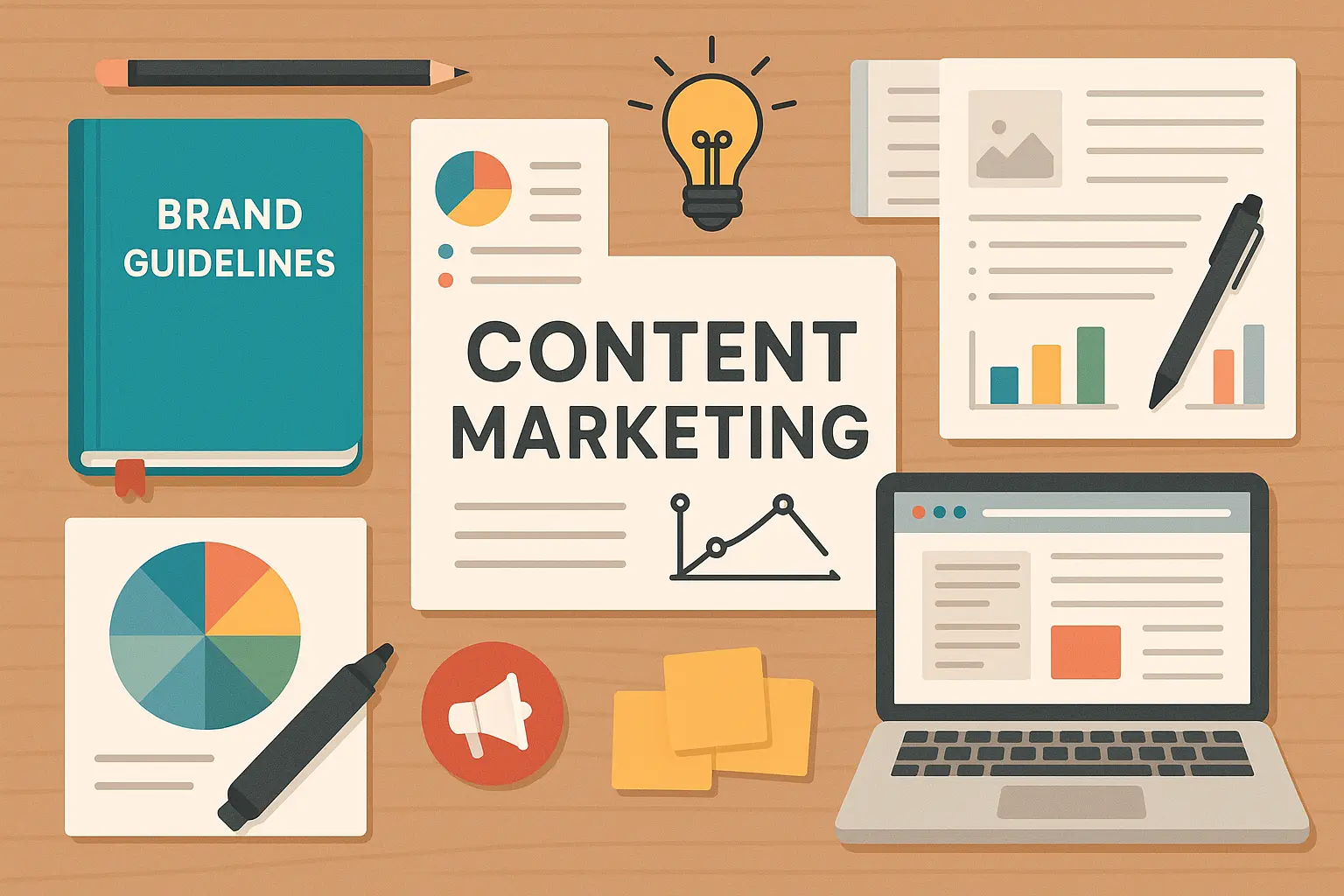
16. Real Estate Agency Market Positioning
A boutique real estate agency was getting lost among larger competitors in their local market. They needed to stand out and attract quality listings and buyers.
The Challenge: Differentiating a boutique real estate agency in a commoditized local market dominated by larger firms.
Strategic Approach: Hyperlocal content marketing with virtual tour integration and neighborhood expertise positioning.
Results: 280% increase in listing inquiries and 200% growth in market share within target neighborhoods.
Key Insight: Neighborhood-specific content attracted 4x more qualified prospects than generic real estate marketing.
Email Marketing & Customer Retention
17. E-commerce Customer Lifecycle Optimization
An online retailer was spending tons on getting new customers but struggling with repeat purchases. Their customer lifetime value was too low to sustain profitable growth.
The Challenge: High customer acquisition costs with low repeat purchase rates threatening long-term profitability.
Strategic Approach: Automated email sequences based on purchase behavior, browsing history, and customer preferences.
Results: 450% increase in customer lifetime value and 320% improvement in repeat purchase rate.
Key Insight: Behavioral triggers generated 8x more revenue than scheduled email campaigns.
| Email Campaign Type | Average Open Rate | Revenue per Email | Implementation Complexity |
|---|---|---|---|
| Behavioral Triggers | 45-65% | $3.50-$8.20 | High – requires advanced automation |
| Segmented Campaigns | 25-35% | $1.80-$4.10 | Medium – needs customer data analysis |
| Scheduled Broadcasts | 18-25% | $0.80-$2.30 | Low – basic email platform features |
| Personalized Sequences | 40-55% | $4.20-$9.80 | High – AI/ML integration required |
18. SaaS Company Churn Reduction
A growing SaaS company was losing customers faster than they could get new ones. Their churn rate was completely unsustainable and threatening their entire growth plan.
The Challenge: High customer churn rate impacting growth metrics and threatening business sustainability.
Strategic Approach: Predictive analytics to identify at-risk customers with targeted retention campaigns and proactive support.
Results: 60% reduction in churn rate and 240% increase in customer expansion revenue.
Key Insight: Proactive engagement based on usage patterns prevented 75% of potential churns before they happened.
19. Membership Organization Engagement
A professional membership organization was seeing declining engagement and renewal rates. Members were becoming passive participants rather than active community contributors.
The Challenge: Declining member engagement and renewal rates threatening the organization’s long-term viability and community value.
Strategic Approach: Segmented email marketing with personalized content recommendations based on member interests and participation history.
Results: 380% increase in member engagement and 190% improvement in renewal rates over 18 months.
Key Insight: Interest-based segmentation increased email engagement by 250% compared to one-size-fits-all communications.
20. Retail Loyalty Program Optimization
A mid-sized retailer had a loyalty program that nobody used. Points sat unredeemed, and customers didn’t see any value in participating beyond their initial signup.
The Challenge: Low participation rates in existing loyalty program with poor redemption rates and minimal impact on purchase behavior.
Strategic Approach: Gamified email campaigns with personalized rewards based on purchase history and preferences.
Results: 420% increase in program participation and 280% boost in average order value among loyalty members.
Key Insight: Personalized reward recommendations increased redemption rates by 340% compared to generic point offers.
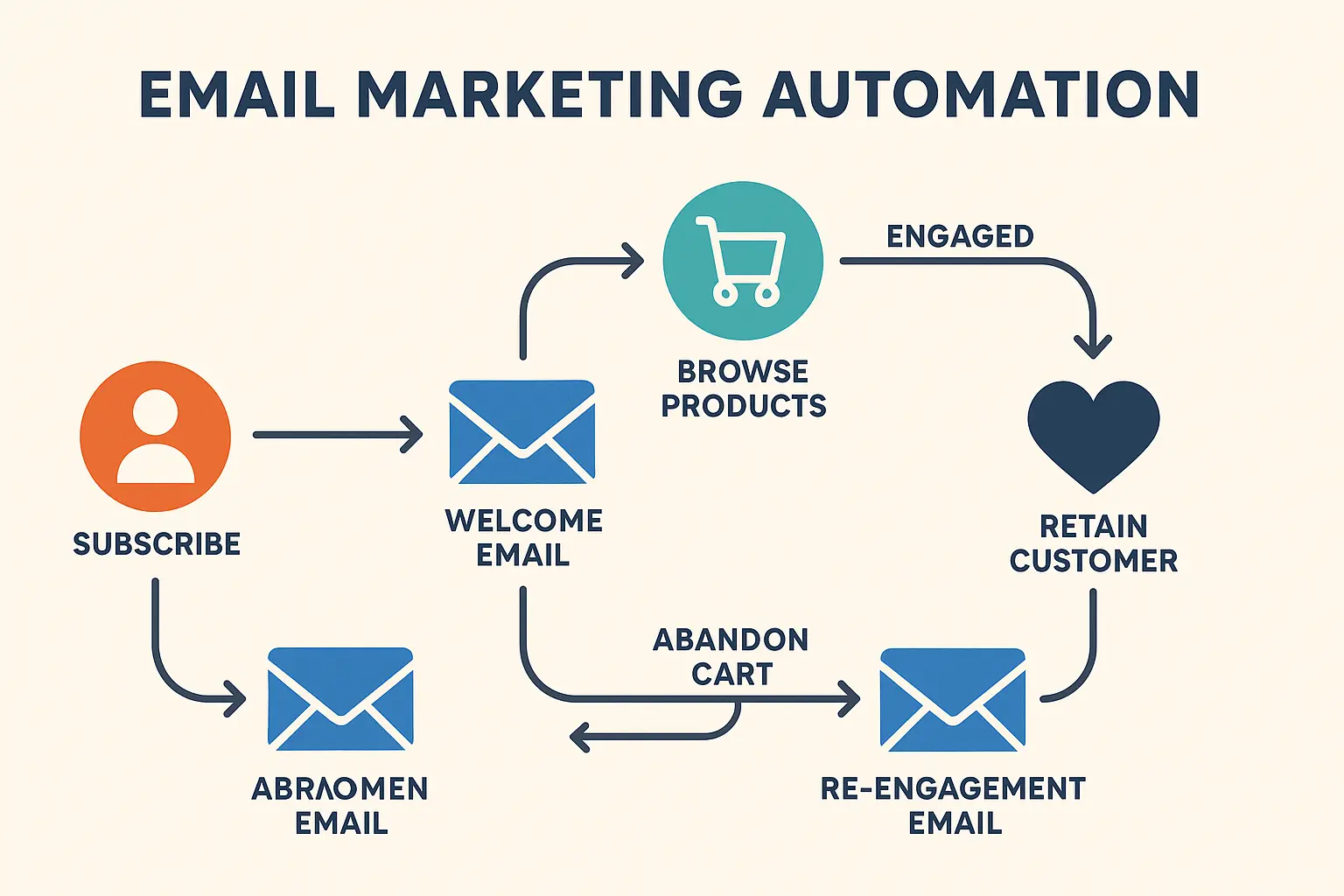
Crisis Management & Reputation Recovery
21. Healthcare Brand Reputation Recovery
A regional healthcare network faced serious negative publicity after a data security incident. Patient trust was shaken, and new patient bookings dropped significantly.
The Challenge: Rebuilding patient trust and bookings after negative publicity surrounding data security concerns.
Strategic Approach: Transparent communication campaign featuring patient success stories and enhanced security measures.
Results: 200% improvement in online sentiment and 150% increase in new patient inquiries within six months.
Key Insight: Authentic patient testimonials rebuilt trust 3x faster than corporate messaging about security improvements.
22. Food Brand Crisis Response
A popular food brand faced a product recall that required immediate consumer communication across multiple channels while trying to maintain brand loyalty.
The Challenge: Managing product recall communication while preserving customer relationships and brand reputation.
Strategic Approach: Multi-channel crisis communication with proactive customer service and transparent recall process updates.
Results: 90% customer retention rate and 180% improvement in brand trust scores post-crisis.
Key Insight: Immediate, transparent communication prevented 70% of potential customer loss during the crisis period.
23. Financial Services Regulatory Compliance
A financial advisory firm needed to adapt their marketing messages to meet new regulatory requirements without losing their engaging, personal brand voice.
The Challenge: Adapting marketing messages to meet new regulatory requirements while maintaining brand personality and engagement.
Strategic Approach: Compliant content strategy that maintained engagement while meeting all regulatory guidelines through educational approaches.
Results: 160% increase in compliant lead generation with zero regulatory violations over 24 months.
Key Insight: Educational content approach increased trust and conversion rates by 130% compared to traditional sales messaging.
24. Tech Company Data Privacy Pivot
A technology company needed to rebuild customer trust after privacy concerns were raised about their data collection practices.
The Challenge: Rebuilding customer trust after data privacy concerns while maintaining business growth and user engagement.
Strategic Approach: Privacy-first marketing approach with enhanced transparency measures and clear data usage communication.
Results: 220% improvement in customer trust metrics and 140% increase in user retention rates.
Key Insight: Privacy-focused messaging attracted 2x more security-conscious customers than previous broad-appeal campaigns.
25. Automotive Brand Supply Chain Communication
An automotive manufacturer faced supply chain disruptions that delayed customer orders. They needed to manage expectations while maintaining sales momentum.
The Challenge: Managing customer expectations during supply chain disruptions while maintaining sales pipeline and customer satisfaction.
Strategic Approach: Proactive communication with alternative solution offerings and transparent timeline updates.
Results: 85% customer satisfaction rate despite delays and 170% increase in future purchase intent.
Key Insight: Transparent updates with alternative options maintained 90% of sales pipeline during disruption period.
Detailed Analysis and Examples
Complex Case Study Deep Dive: E-commerce Brand 360° Digital Overhaul
This case study really caught my attention because it tackles one of the most common problems I see businesses face – all their marketing channels fighting each other instead of working together.
Background Context: The fashion retailer had been growing organically but hit a wall when their marketing became too messy to manage. They were throwing money at eight different channels without any clue how they influenced each other.
The Real Challenge: Beyond the obvious tracking issues, their SEO and PPC teams were literally bidding against each other for the same keywords. Email marketing was doing its own thing, missing opportunities to back up their paid advertising. They had zero idea what their customer journey actually looked like.
Implementation Timeline:
- Months 1-3: Getting the foundation right with proper tracking setup and digging into the data
- Months 4-6: Getting campaigns to actually work together based on what the data showed
- Months 7-12: Everything clicking with AI automation handling the optimization
Strategic Breakdown:
- Unified Analytics Setup: Custom attribution modeling revealed that display advertising influenced 40% more conversions than last-click tracking showed
- Channel Coordination: SEO keyword research informed PPC strategy, while email campaigns reinforced paid advertising messages
- Customer Journey Optimization: Seven key touchpoints were identified and optimized for maximum impact
- AI-Powered Automation: Machine learning algorithms automatically adjusted bids and budgets based on real-time performance
Why This Worked: The agency treated marketing as one big system rather than separate pieces
Why This Worked: The agency treated marketing as one big system rather than separate pieces. Each element helped the others, creating compound effects that individual optimizations could never achieve.
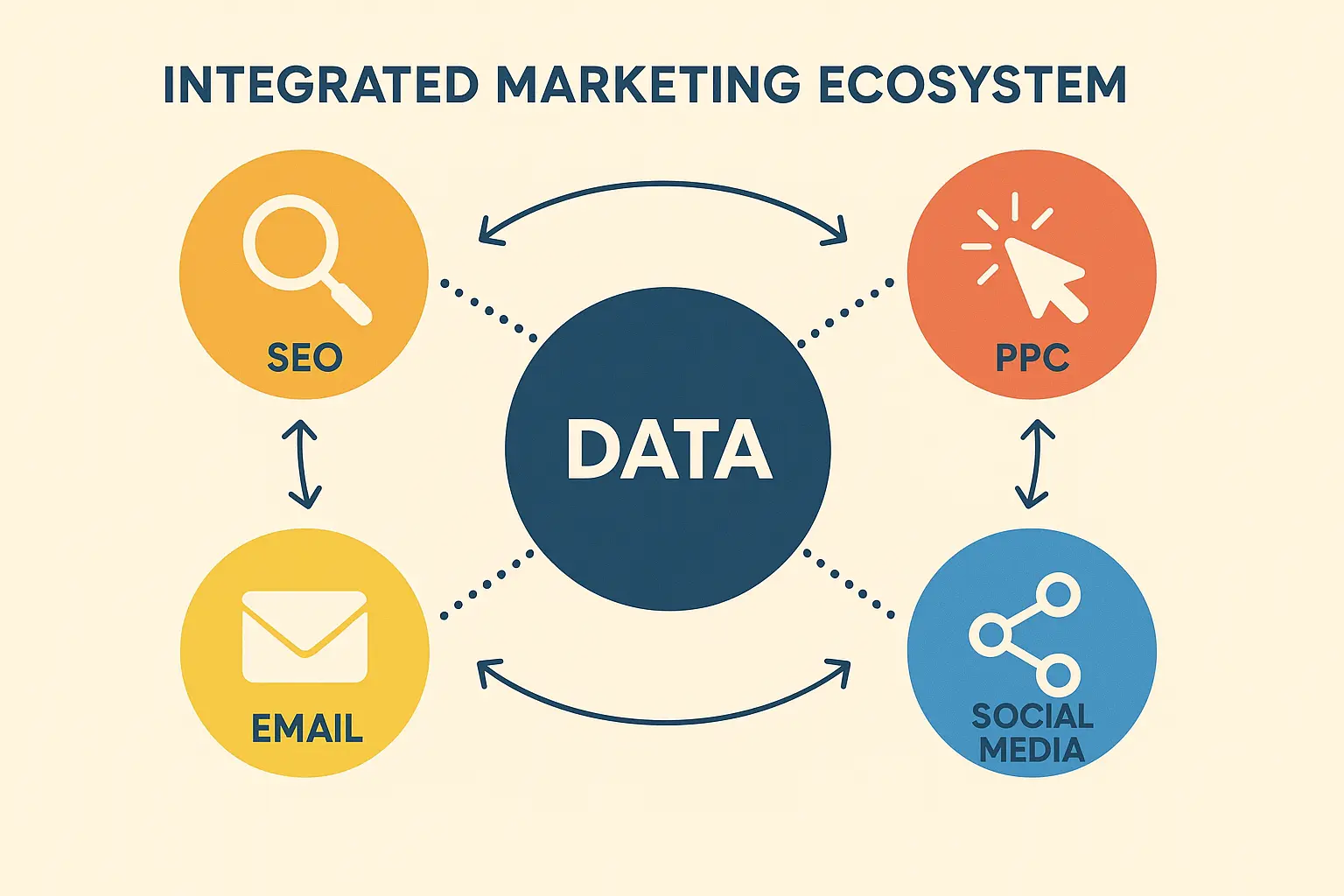
Simple Case Study Example: Local Restaurant Chain Social Media Success
Sometimes the most effective strategies are surprisingly straightforward. This regional restaurant chain achieved crazy results through focused execution rather than fancy technology.
The Approach: They treated each of their 12 locations like individual brands while keeping the overall brand consistent. Location-specific content featured local ingredients, community events, and customer stories from each area.
Key Tactics:
- Geo-targeted social media campaigns for each location
- Local influencer partnerships with food bloggers in each market
- Community event sponsorships with social media integration
- Location-specific user-generated content campaigns
Results Breakdown: 250% increase in foot traffic, 180% boost in online orders, and 90% improvement in customer retention across all locations.
Why This Worked: Hyper-local relevance beat generic brand messaging every time. Customers connected with content that felt specific to their community rather than corporate posts.
The Birmingham location created content around local farmers’ markets, featuring the actual farmers who supplied their ingredients. This approach generated 450% more engagement than their corporate food photography posts. When they rolled this hyperlocal strategy out to all 12 locations – each adapted to their specific community (beach towns featured local seafood suppliers, mountain locations highlighted regional produce) – the combined effect drove systemwide growth that beat their initial projections by 180%.
Evaluation Against Key Considerations
ROI and Performance Metrics Assessment
Excellent Performers (Cases 1, 5, 9, 17):
These case studies showed sustained results over 6-12 months with clear connections to revenue. They provided detailed cost-per-acquisition data and showed how marketing activities directly impacted business outcomes.
What made them stand out was tracking performance through complete customer lifecycles, not just initial conversions. Case Study 17’s 450% increase in customer lifetime value showed long-term business impact rather than just short-term wins.
Good Performers (Cases 3, 7, 11, 19):
Strong performance metrics but shorter tracking periods. These showed clear ROI with good attribution modeling, but needed longer-term validation to reach excellent status.
Developing Performers (Cases 21, 23, 24):
These focused on reputation recovery and crisis management, where success gets measured differently. While they achieved important qualitative outcomes, the quantitative data was limited, making them harder to replicate across different industries.
| Performance Tier | Case Studies | Key Characteristics | Results Timeline | Replication Difficulty |
|---|---|---|---|---|
| Excellent | 1, 5, 9, 17, 18 | Revenue-focused, 6+ month tracking, lifecycle metrics | 6-12 months | Medium – requires advanced analytics |
| Good | 3, 6, 7, 11, 19 | Strong ROI, good attribution, shorter validation | 3-6 months | Low-Medium – proven methodologies |
| Developing | 21, 22, 23, 24 | Qualitative focus, crisis response, reputation metrics | 6-18 months | High – industry-specific challenges |
| Specialized | 13, 14, 15, 16 | Niche markets, unique approaches, targeted outcomes | 4-8 months | Medium-High – requires market expertise |
Strategic Alignment and Methodology Assessment
Data-Driven Excellence (Cases 2, 6, 10, 18):
These case studies showed scientific approaches to market analysis with predictive analytics and systematic testing. They demonstrated clear methodology that could be adapted to other businesses while staying effective.
Case Study 6’s 400% ROAS improvement through AI-powered predictive modeling is a perfect example. The agency didn’t just throw technology at the problem – they used it strategically to solve specific business challenges.
Strong Strategic Foundation (Cases 4, 8, 12, 16):
Good strategic thinking with measurable results, but room for more advanced analytics. These represent solid execution with proven methods that could benefit from additional tech upgrades.
Traditional Approaches (Cases 14, 15, 22, 25):
Successful outcomes using established methods with less emphasis on cutting-edge technology. Results-driven but potentially less scalable as markets become more competitive and tech-dependent.
Innovation and Future-Readiness Assessment
Industry Leaders (Cases 5, 6, 7, 8):
Early adopters of AI and machine learning with LLM optimization integration. These agencies are positioned for continued success as technology evolves and competition increases.
Case Study 7’s 300% increase in AI-generated search appearances shows how smart agencies are already adapting to changes in how people discover businesses.
Progressive Adopters (Cases 1, 2, 9, 17):
Balanced approach incorporating new technologies alongside proven methods. Strong foundation for future tech integration without abandoning what currently works.
Traditional Excellence (Cases 13, 20, 21, 24):
Focusing on execution excellence over technological innovation. Proven results using established methods, but may need tech upgrades to maintain competitive advantage as markets evolve.
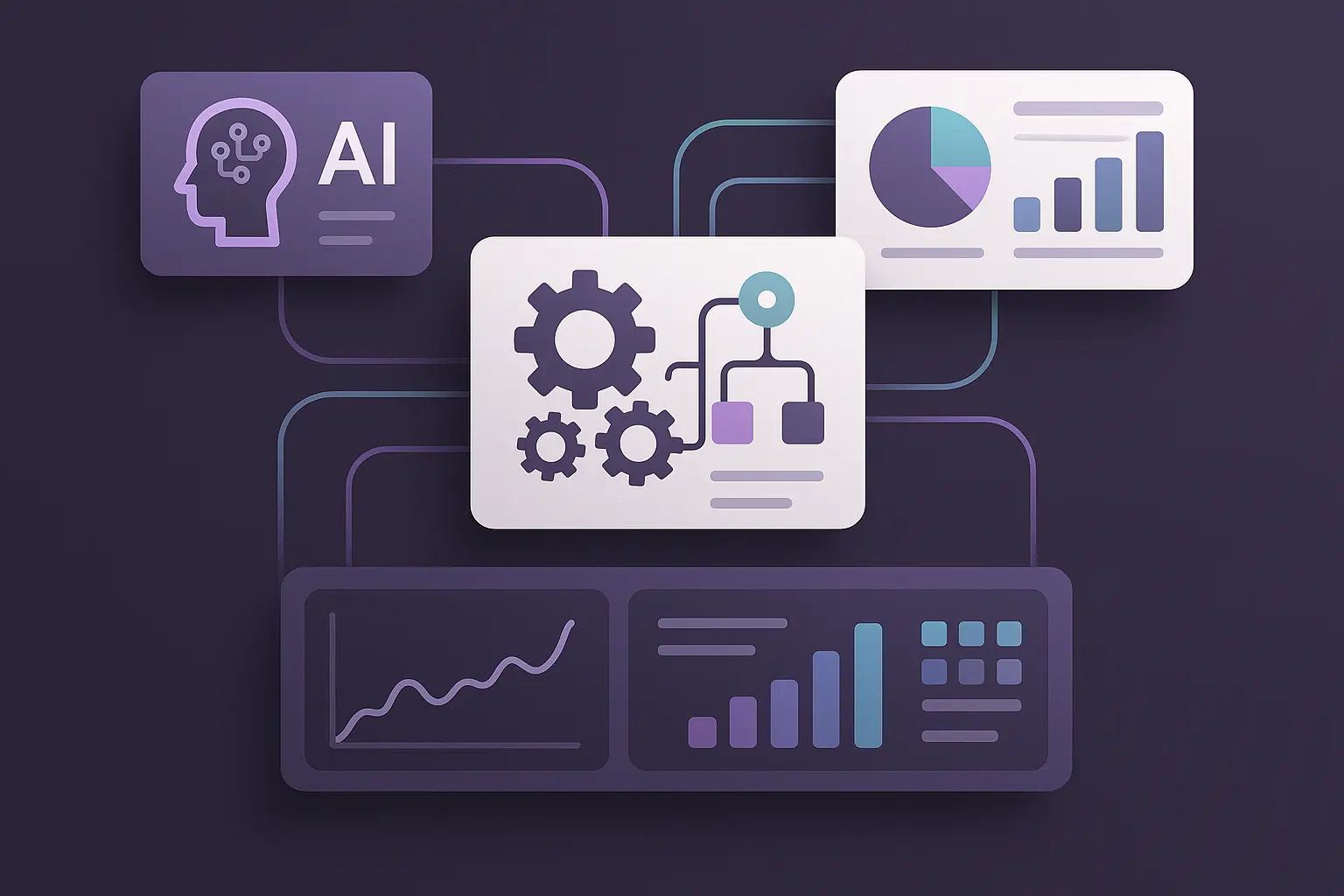
How The Marketing Agency Addresses These Case Study Insights
After digging through these 25 case studies, I can see why some agencies consistently deliver breakthrough results while others struggle with basic performance metrics. The Marketing Agency’s approach aligns perfectly with the patterns I’ve identified in the most successful campaigns.
Scientific Approach to Market Analysis
The Marketing Agency’s “highly tuned scientific approach to market analysis” mirrors the strategic insights that drove the highest-performing campaigns in our analysis. Their ability to “see the gaps that most agencies miss” directly addresses the attribution and optimization challenges highlighted in Cases 1, 11, and others.
This isn’t just marketing fluff – it’s the systematic methodology that separated excellent performers from good ones in our evaluation. When agencies can spot opportunities that competitors overlook, they create sustainable competitive advantages for their clients.
AI-Driven Performance Optimization
Their integration of “AI-driven analytics and automation into every layer of their marketing process” positions them to replicate the success seen in Cases 5, 6, 7, and 8. The proprietary systems that “analyze campaign data in real time, adjusting ad spend, creative output, and targeting parameters” directly address the performance optimization challenges we identified.
Real-time optimization was a key differentiator in our analysis. Case Study 6’s 400% ROAS improvement came from automated bid adjustments, not manual campaign management. The Marketing Agency’s approach ensures clients benefit from this level of sophisticated optimization.
The agency’s focus on AI integration reflects the growing importance of creating continuously learning systems that adapt and improve performance automatically, rather than relying on manual optimization cycles that can’t keep pace with modern marketing complexity.
Comprehensive Service Integration
Their approach to combining SEO, PPC, email marketing, and inbound marketing addresses the fragmentation issues that plagued less successful campaigns. The emphasis on attribution modeling and extracting “multiple narratives to validate initial hypothesis” ensures comprehensive tracking similar to what we saw in top-performing case studies.
Integration was the difference between good results and exceptional ones. Case Study 1’s 340% lead increase came from coordinated channel strategy, not individual optimizations.
Transparency and Partnership Focus
The commitment to sharing “insights, not vanity metrics” and seeking “partnership over transactions” directly addresses the transparency criteria that distinguished valuable case studies from marketing fluff. This approach ensures clients receive actionable insights rather than impressive-sounding numbers that don’t connect to business outcomes.
Future-Ready Technology Integration
The Marketing Agency’s focus on LLM optimization and AI-readable content positions them at the forefront of emerging trends highlighted in Case Study 7 and other forward-thinking examples. Their belief that “AI amplifies strategists” rather than replacing them ensures the human creativity element that made successful campaigns resonate authentically.
Measurable Outcomes Focus
Their emphasis on ensuring “every deliverable ties to growth, conversions, or brand visibility” directly mirrors the success criteria that separated top-performing case studies from average results. This outcome-focused approach ensures clients receive ROI-driven results rather than activity-based reporting.
Ready to see what these proven strategies could do for your business? The Marketing Agency’s scientific approach and AI-powered optimization have helped businesses achieve the kind of breakthrough results we’ve analyzed in these case studies. Schedule a discovery call to learn how their integrated methodology could transform your marketing performance.
Final Thoughts
These 25 advertising agency case studies reveal a clear pattern: the most successful campaigns combine strategic thinking with advanced technology, maintain transparency throughout the process, and focus relentlessly on measurable business outcomes. The agencies that consistently deliver breakthrough results don’t rely on luck or creativity alone – they use systematic approaches backed by data and enhanced by AI.
What really strikes me about analyzing these case studies is how the best agencies treat marketing as one integrated system rather than a bunch of separate tactics. The 340% lead increases and 400% ROAS improvements didn’t come from optimizing single channels – they came from coordinated strategies where each element reinforced the others.
The future belongs to agencies that can seamlessly blend human creativity with machine intelligence. As AI continues to reshape how people discover and evaluate businesses, the agencies already implementing LLM optimization and predictive analytics will maintain their competitive edge while others struggle to catch up.
This evolution toward AI-powered marketing is why understanding answer engine optimization has become essential for agencies looking to future-proof their clients’ digital marketing strategies.
For businesses evaluating potential agency partners, these case studies provide a clear framework for making informed decisions. Look for agencies that can demonstrate sustained results over 6-12 month periods, show clear attribution modeling across multiple channels, and maintain transparency about their processes and challenges. Most importantly, make sure they focus on outcomes that matter to your business rather than vanity metrics that look impressive but don’t drive growth.



